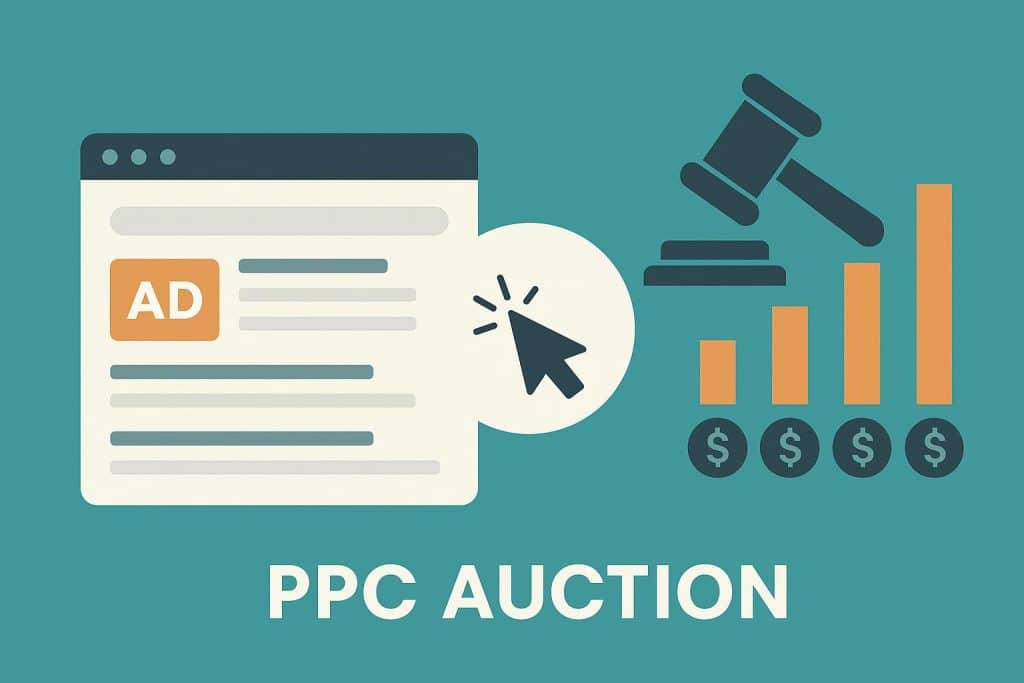Introduction to PPC Auctions
Navigating the complexities of digital advertising requires a deep understanding of Pay-Per-Click (PPC) auctions, which form the foundation of how ads are placed across search engines and platforms. For businesses and marketers, mastering these processes is essential to maximizing ad visibility and driving relevant traffic. Whether you’re a seasoned advertiser or just launching your first campaign, knowing how auctions influence performance is key to making strategic decisions and improving your ROI. If you’re exploring specialized strategies, partnering with a Walmart advertising agency can offer tailored expertise for navigating platform-specific PPC opportunities.
PPC auctions allow businesses to compete in real time for top ad placements, but factors such as ad quality, relevance, and bid amount ultimately determine where each ad appears. A successful PPC campaign relies on understanding the mechanics behind these auctions, leveraging advancements in AI, and transparent reporting practices to maintain a competitive edge.
How PPC Auctions Operate
In a typical PPC campaign, advertisers bid on keywords they believe their target audience will use when searching for relevant products or services. Each time a user triggers a search, an auction is held, factoring in bid amounts and several qualitative signals. The search engine’s algorithm evaluates each ad’s eligibility and position, blending high bids and relevant, quality ads to win the most lucrative positions.
Ad Rank, a composite score determined by bid amount, ad quality, and the expected impact of ad extensions and formats, ultimately dictates placement. The higher your Ad Rank, the better your ad’s chance of being viewed by prospective customers.
Separate Auctions for Different Ad Placements
Search engines have recently clarified how they allocate ad placements. There are now separate auctions for each section of the search results page—for example, the set of ads at the top and those at the bottom. This evolution means an advertiser’s campaign can qualify for multiple positions at once, depending on how well it meets the criteria unique to each auction.
The introduction of these segmented auctions emphasizes the importance of bid strategy and ad quality even further. In e-commerce, Amazon advertising PPC follows a similar principle: placement depends on relevance, bidding competitiveness, and ad performance. It’s now possible for a single advertiser to dominate multiple sections of the same results page if its performance metrics remain strong and its bids are competitive.
Factors Influencing Ad Placement
Understanding the individual elements that sway ad placement within PPC auctions is crucial for effective optimizations. The most significant factors include:
- Bid Amount: Higher bids increase your chances of ranking in more visible ad positions, but only when paired effectively with other factors.
- Quality Score: Calculated by the platform, Quality Score integrates metrics such as ad relevance, expected click-through rate (CTR), and landing page experience.
- Ad Relevance: Ads closely matching user intent and search terms tend to outperform less targeted messaging.
- Expected CTR: Historical campaign performance and anticipated engagement rates determine where your ad is placed.
Additional contextual considerations, such as geographic location and device targeting, may influence ad serving and visibility.
Impact of AI on Ad Placement
The emergence of AI-driven search results and ad placements has transformed the digital advertising landscape. Traditionally, ad placement relied heavily on static quality metrics and bids. However, the integration of AI means ad placements can occur within AI-generated content blocks or alongside them—providing new opportunities and challenges for visibility.
As algorithms become more sophisticated, advertisers must continuously adapt their strategies to ensure they seize these emerging placements. They focus on high-quality content and structured data to signal relevance and maximize exposure within AI-powered environments.
Strategies for Optimizing Ad Placement
To navigate the evolving landscape, advertisers should consider the following actionable strategies:
- Optimize Quality Score: Regularly update your ads and landing pages to ensure maximum relevance, employing A/B testing to refine messaging and UX.
- Adjust Bids Strategically: Set bids based on robust analysis of keyword performance and audience segments, rather than simply outbidding the competition.
- Utilize Ad Extensions: Incorporate site links, callouts, and structured snippets to increase your ad’s visibility and potential click-throughs.
- Monitor Performance: Make data-driven adjustments by tracking insights and analytics, pivoting tactics based on actionable trends.
Consistent optimization—paired with staying informed about industry developments—helps advertisers weather changes in auction dynamics and maintain an edge in competitive spaces.
Understanding the Search Partner Network
While primary ad placements on major search engines like Google and Bing get the most attention, the Search Partner Network extends your campaign’s reach by displaying ads on affiliated websites. Recent updates offer advertisers full placement reporting, providing transparency on where ads appear, click sources, and detailed performance data.
This visibility allows for smarter budget allocation, better content targeting, and improved exclusion of underperforming placements. Leveraging this expanded insight helps maximize return while minimizing wasted spending.
Final Thoughts
The mechanics of PPC auctions and ad placement have never been more sophisticated or critical to digital success. Advertisers who embrace continuous learning, adapt to technological advancements, and implement robust optimization strategies will thrive in this fast-paced arena. Staying up-to-date with search engine policies, AI enhancements, and marketplace changes can empower businesses to achieve greater visibility, attract qualified audiences, and realize stronger returns from their advertising investments.
